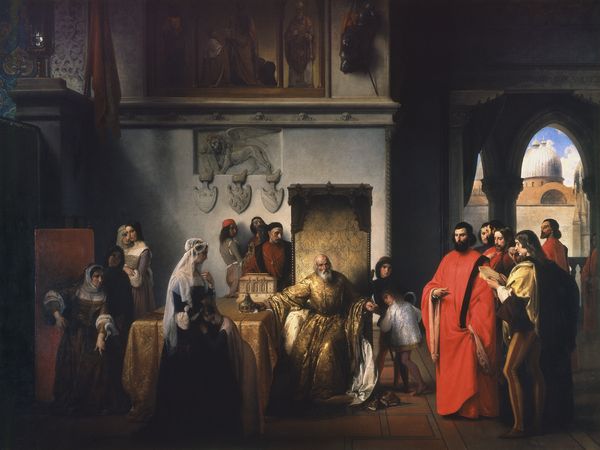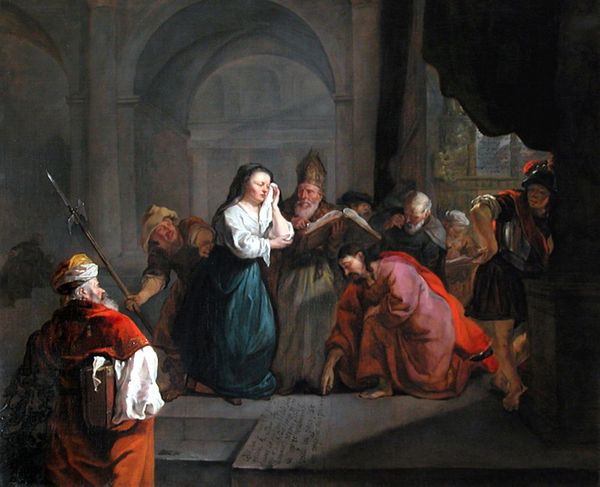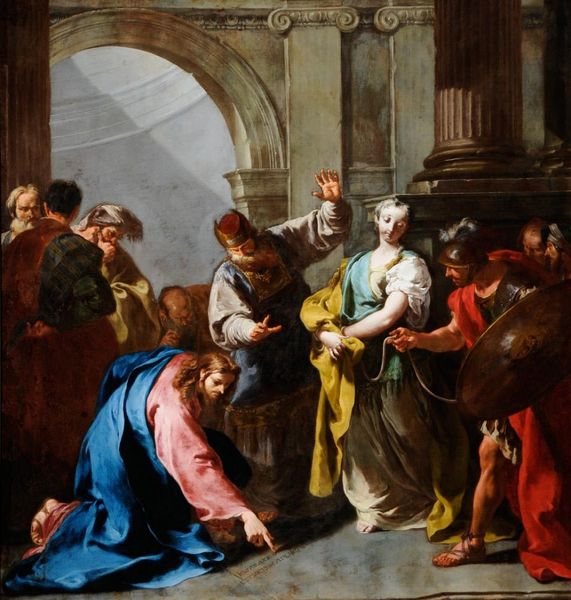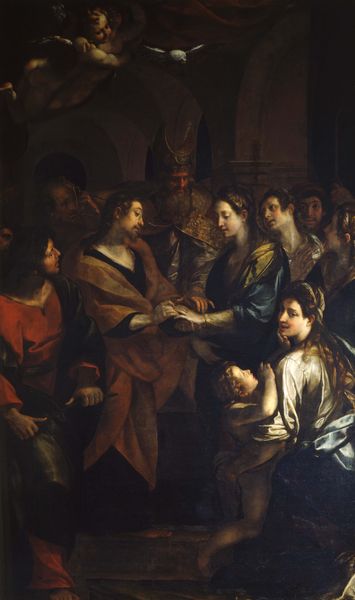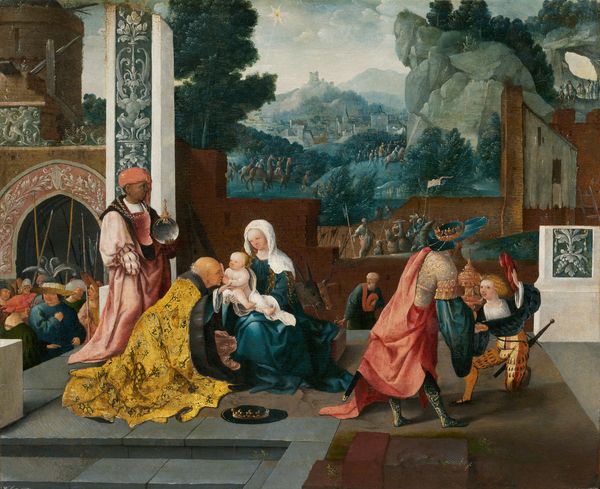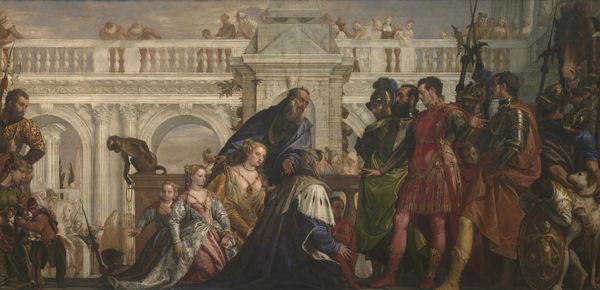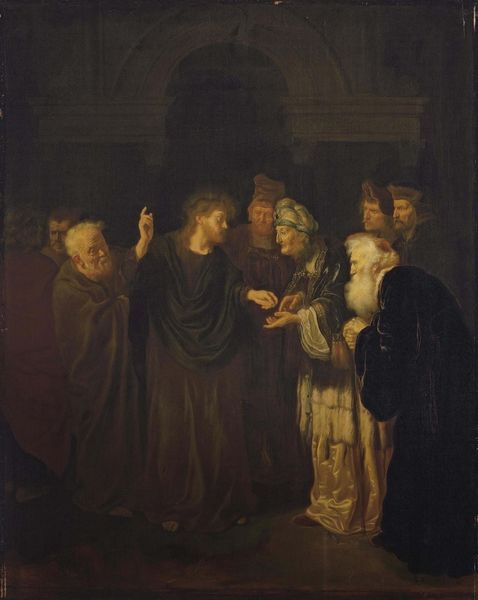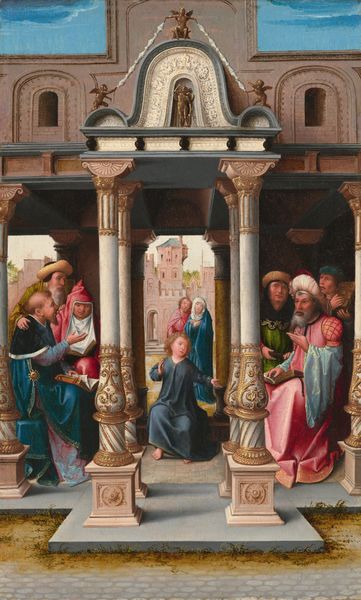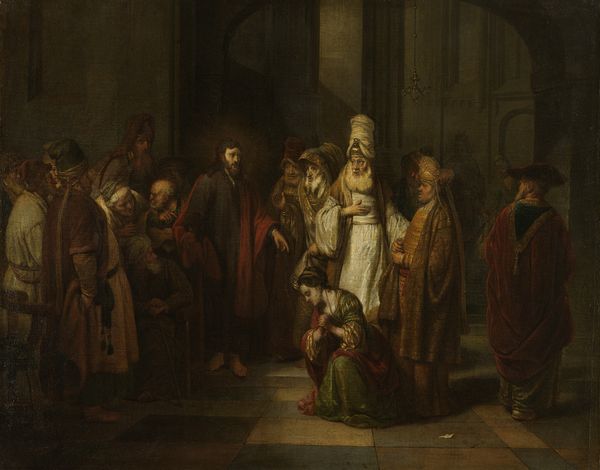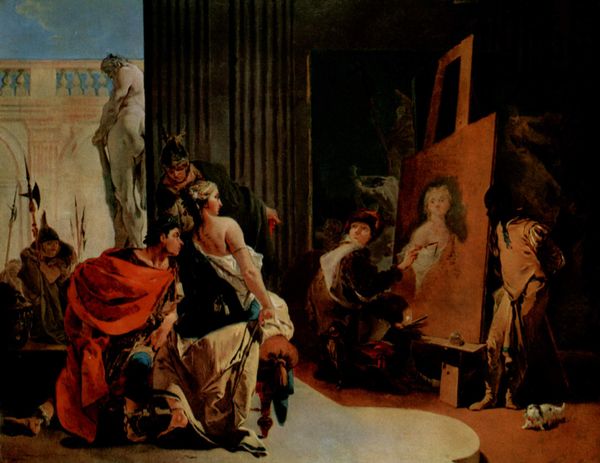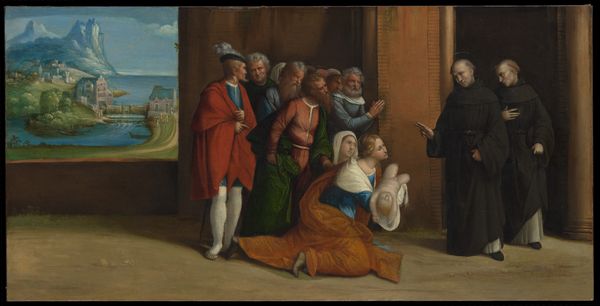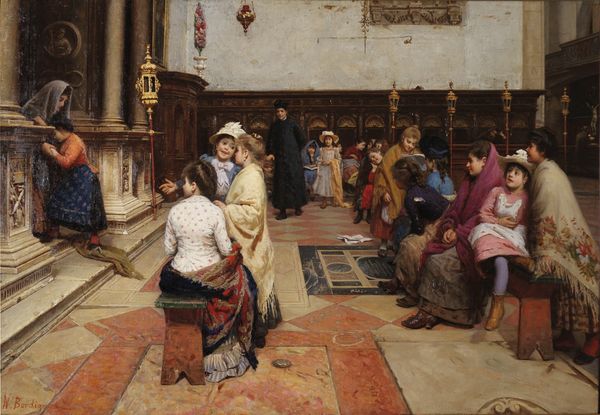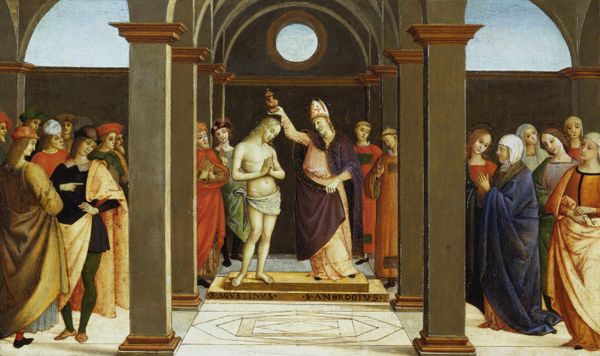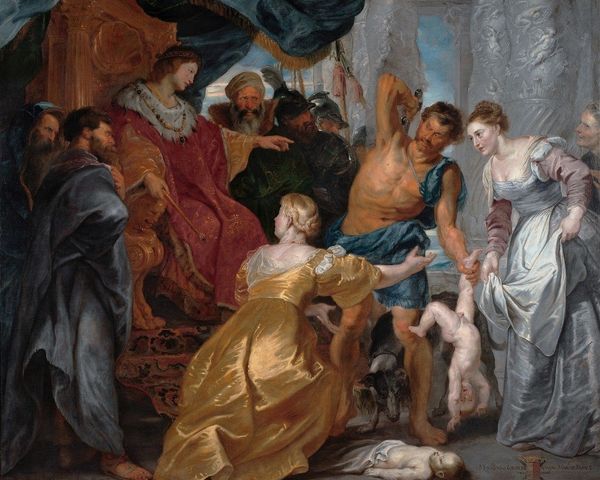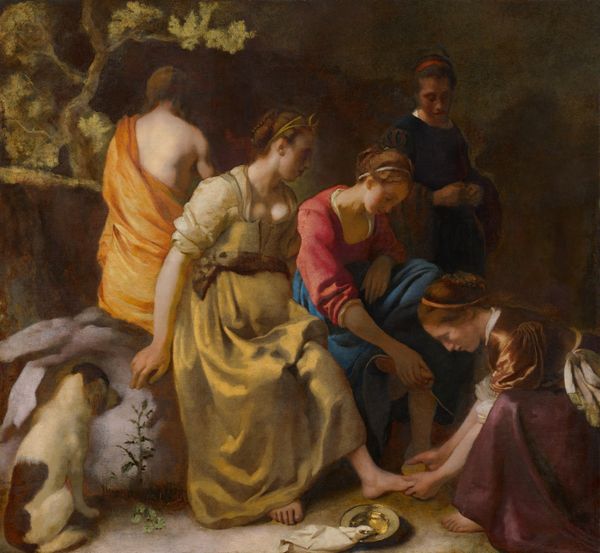
#
street festival
#
3d character model
#
cultural heritage
#
culture event photography
#
character photography
#
cultural celebration
#
portrait character photography
#
storytelling cultural
#
ethnic design
#
cultural identity
Copyright: Public domain
Editor: So, here we have "Bassanio winning the heart of Portia from ''The merchant of Venice''" by Antonio Paoletti. I am immediately struck by how theatrical it feels. What are your initial thoughts when you look at this work? Curator: My focus goes beyond the surface. This piece offers an entry point to dissecting societal expectations and the commodification of women within historical narratives. Considering that the painting depicts a scene from Shakespeare's play, how does this specific moment in the narrative reflect broader socio-economic power structures of the time, especially regarding marriage and women's agency? Editor: I see your point. It’s a love story, but the backdrop feels...transactional. How did artistic depictions like these perpetuate certain ideas about relationships? Curator: Exactly. We can view depictions of women winning hearts through a feminist lens. How do these paintings serve to uphold or challenge traditional gender roles? In the context of the Merchant of Venice, Portia has wealth, making her desirable, so is Bassanio choosing love, or security? Does this artwork glorify or critique the patriarchal structures in Venetian society? What's your interpretation? Editor: I hadn't considered that power dynamic so explicitly. Perhaps it reinforces the idea of women as property or as a means to climb the social ladder, while masking it as a romantic fairytale. Curator: Precisely. Let’s consider how this piece reinforces specific identities. Are certain characters like Shylock sidelined to enable and reinforce the celebration of heterosexual, Christian, and wealthy characters? How do we, as modern viewers, resist passively accepting the dominant narrative in this painting? Editor: This makes me question the choices I make as a viewer. I'm starting to wonder how much my own biases shape my interpretations of the narrative depicted in art, or even what art I'm drawn to in the first place. Curator: And there you have it – self-reflection and active viewing are key. It’s not just about what the artist intended, but what we, as critical viewers, take away from it and how it informs our understanding of the world.
Comments
No comments
Be the first to comment and join the conversation on the ultimate creative platform.
